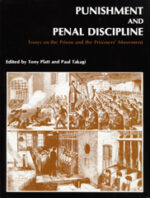Description
Race and the Problem of Crime in Time and Newsweek Cover Stories, 1946 to 1995
Melissa Hickman Barlow traces the origins of contemporary mainstream contempt for the problems of urban racial minorities in the United States. The article explores how media representations of the problem of crime and of the violence associated with African American political struggle contributed to current ideological notions regarding “young black males” as criminals. Only in the 1960s did crime begin to be racialized, with an equivalence established between criminals and “young black males” for the first time. Public consent for the extreme levels of coercive control applied to a substantial proportion of the African American population is tied to these ideological linkages. It was a dimension of the contests over the meaning of race, crime, and justice that resulted from the Civil Rights Movement. Since the 1960s, criminalization of young Black men has played a pivotal role not only in fragmenting African American struggles for racial justice and equality, but also by the 1970s served as a warehousing strategy for a surplus population within a declining economy, just as African Americans were poised to assert their rights to partake in the American Dream. Criminal justice control of African American men as a racially and economically marginalized population, eventually transformed into a “war on crime,” has meant that African Americans constitute nearly half the prison population, despite making up less than 13% of the U.S. population.
African Americans — crime and criminals — mass media, crime and criminals — African Americans — mass media, mass media — African Americans — crime and criminals; urban racial minorities
Citation: Social Justice Vol. 25, No. 2 (1998): 149-183

